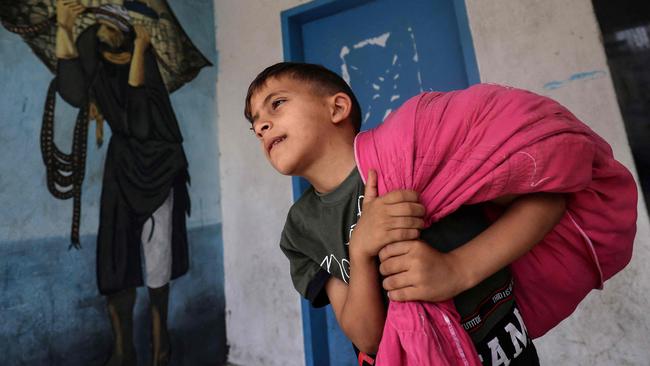Cycle of violence doesn’t stop here
The fighting lasted less than two weeks, but there was no shortage of explosions. By the end, Palestinian militant group Hamas had fired 4000 rockets at Israel.

The fighting lasted less than two weeks, but there was no shortage of explosions.
By the end, Palestinian militant group Hamas had fired 4000 rockets at Israel. Most were intercepted by Israel’s missile defences. Israel responded with hundreds of airstrikes on Gaza, which had no shield. More than 200 people were killed, all but 12 of them Palestinian.
The battle began to wind down on Thursday; after nightfall Israel and Hamas agreed to a ceasefire. Assuming that calm returns, who knows how long it will last?
Fighting between Israel and Hamas has become almost routine. Since the Islamist group grabbed control of Gaza in 2007, the two sides have fought four wars and several smaller battles, costing thousands of lives (again, mostly Palestinian). The spark for the latest outbreak came in Jerusalem — but were it not Jerusalem, it would have been some other cause. Israel and Hamas are stuck in a perpetual crisis, trapped by the logic of war, which dictates that they keep going through the same motions.
Start with Hamas, which sees fighting “the Zionist invaders” as its raison d’etre. Its campaign of suicide-bombings in the 1990s and 2000s bears much responsibility for destroying the Oslo peace accords. Because of its incessant attacks, Israel withdrew from Gaza in 2005. The group expelled Fatah, its Palestinian rival, two years later.
Today most Gazans see Hamas as authoritarian and corrupt. Unable to point to any achievements, it instead blames Israeli aggression and poses as the one true defender of the Palestinian cause.
Hamas’s rockets inflict relatively little damage. But Israel feels it has to respond. “If it happened to Washington or to New York? You know damn well what you would do,” Israeli Prime Minister Benjamin Netanyahu said on American TV. So the cycle has continued.
Israeli officers say they have significantly degraded Hamas’s capabilities, but even they don’t think the group will be down for long. When the next spark comes, the militants will undoubtedly be there to fan it. And be in no doubt that it will come. Both sides are content to leave Gaza a festering pit of misery that periodically erupts.
Hamas’s control in some ways suits Netanyahu, inasmuch as it weakens the Palestinian leadership and dims the prospect of a Palestinian state. Israel will still try to keep the group down, though. It and Egypt have kept Gaza under blockade since 2007, making it harder for Hamas to arm itself — and making life grim for ordinary Gazans.
The militants were surprised by how hard Israel hit back after they launched their first barrage on May 10th. Still, even as the death toll mounted, they did not stop.
There are new types of pressure from abroad, too. Whereas US President Joe Biden emphasised “Israel’s legitimate right to defend itself”, some fellow Democrats called for putting conditions on American aid to Israel.
But for now, none of that is likely to stop the cycle of violence. Israel and Hamas will come out of this battle much as they went in. Nothing has been gained; nothing has been resolved. And yet they are likely to do it again.



To join the conversation, please log in. Don't have an account? Register
Join the conversation, you are commenting as Logout